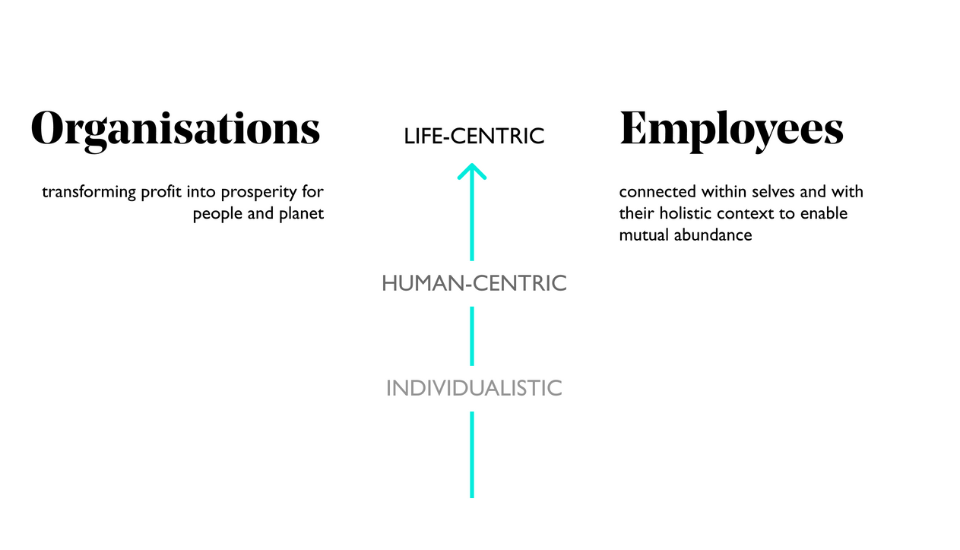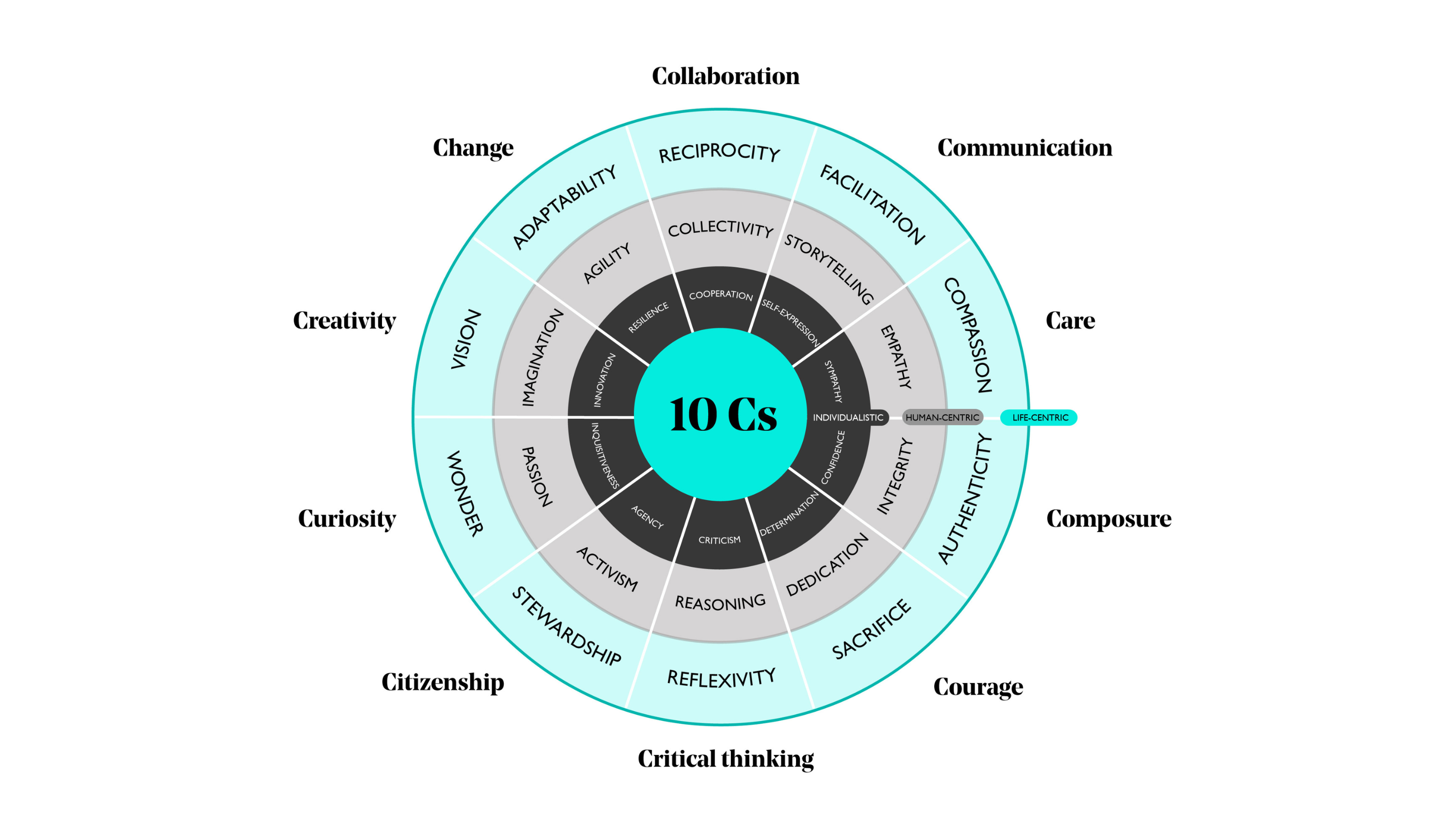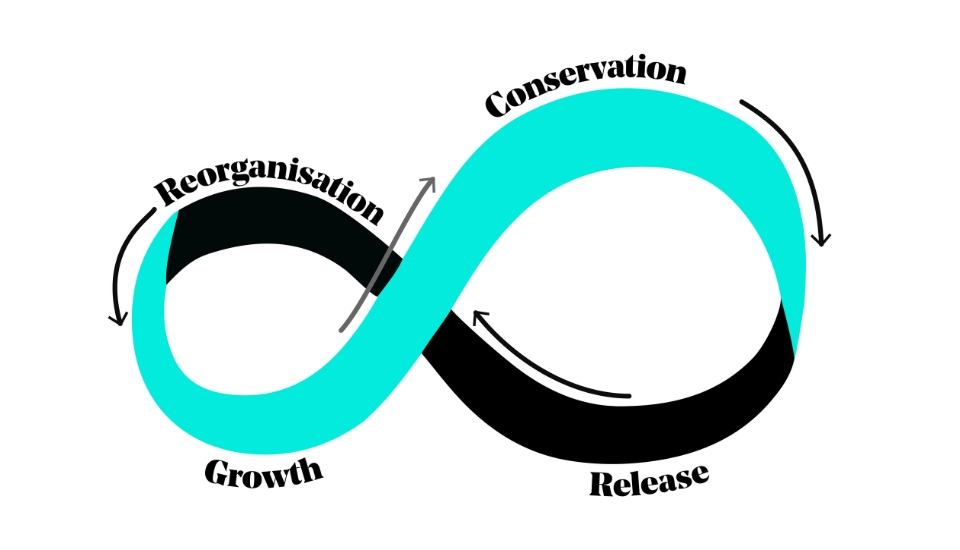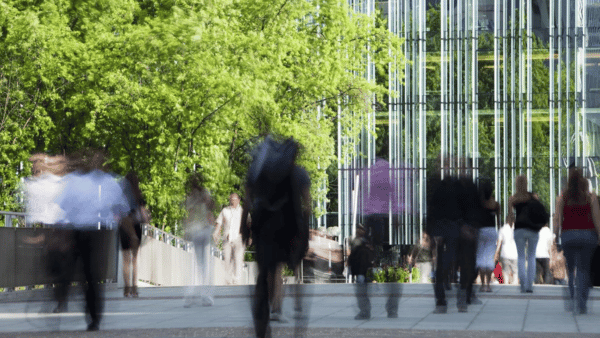In the second of a two-part series, we highlight how the RSA is exploring what it means to bend the arc of workforce capabilities towards a regenerative economy, via our six-month-long regenerative business enquiry.
So far, we’ve convened with a constellation of over 50 businesses, thought leaders and practitioners, to amplify the incredible system-shifting work already underway.
As we continue to distil and share our insights for discussion, we've begun to arrive at a powerful provocation: what if everyone at work was empowered as a regenerative innovator, delivering radical business value for a thriving future?
We believe nurturing deeper capabilities within individuals across business lies at the heart of our collective need to react and respond effectively and appropriately to a new life-centric paradigm that is fast emerging.

Enabling business regeneration
Nurturing the right capabilities is critical for businesses to be able to respond positively to our world.
A new paradigm for workforce capabilities
There is a growing movement of regenerative thought leaders, business model innovators, policymakers and educators highlighting the emerging attributes needed for a regenerative future, albeit not often framed as capabilities. Notable examples include Capital Institute’s 8 Principles Of A Regenerative Economy and Giles Hutchins and Laura Storm’s Regenerative Leadership DNA, although we recognise there are many others of immense value.
While there is power in the plurality of these different frameworks, there are also key themes in common that we can draw on to help catalyse a growing movement of change around a common vision.
Underpinning these frameworks is a paradigm shift in worldview that changes how we think of the purpose of capability development and what it needs to enable us to do.
These shifts in worldview – from individualistic to human-centric to life-centric – affect how capabilities manifest in ourselves and the organisations we work in.

Organisations working from an individualistic worldview demonstrate a competitive mindset: prescribing processes that increase productivity to maximise profits above all else. Employees within individualistic organisations are expected to be independent, autonomous agents that manage and control others and external resources. We recognise that this worldview is held by everyone at one point in time or another, especially in times of self-preservation and a high degree of uncertainty. However, working solely from this individualistic worldview can also lead to degenerative and extractive ways of working.
Organisations with a human-centric worldview on the other hand have a more sustainable mindset. They recognise that they are part of a complex, networked system and work to unlock human potential to deliver multiple forms of value. Employees in these organisations are more engaged in collective changemaking and work with others to create cultural and social impact.
Shifting from an individualistic to a more human-centric worldview changes the emphasis from capabilities that support individual success or business competitiveness (for example, confidence and determination), to recognising reliance on wider collaborations and strengthening our ability to create cultural or social value for other stakeholders within systems (for example, collectivity).
This shift also encourages us to go beyond just enduring changes and growing a thicker skin (for example, agency and resilience) to engaging in the process of change and seeking to create the change we want to see. In a complex, relationship-orientated world, self-awareness of motivations and emotions is critical, emphasising capabilities such as empathy, fairness and diversity.
When we see the world as a constantly evolving, complex, living system, we must also learn to let go of the idea of control when working to enact change.
A life-centric worldview takes a step beyond sustaining value (doing less harm) to being more regenerative (proactively doing better). Organisations with this worldview recognise themselves as ever-evolving catalysts continuously transforming profit and value to prosperity for people and planet. Employees in such organisations are connected, caring custodians in harmony within selves and with their holistic context to enable mutual abundance.
Shifting from a human-centric to a more life-centric worldview necessitates concepts such as nested systems thinking. We, therefore, see a shift from promoting nature or environmental awareness and respect to talking about developing a connection to nature as an embodied sense of direct relationship with the world around you. Such thinking also incorporates wider empathy for the future and the importance of an intergenerational long-time perspective.
This shift requires us to not just see ourselves as part of a wider ecosystem but also to recognise that change doesn’t just happen out there somewhere, but that our behaviours influence the systems around us. Businesses need employees with the capability to interrogate and nudge their behaviours to influence policies and purpose, and, in turn, must ask these critical questions of themselves and create safe and enabling conditions for employees to learn, fail, grow and thrive continuously.
This invites us to build from capabilities like ‘activism’ to grow capabilities such as ‘stewardship’ that also incorporate inner development (also known as ‘coherence’ – the ability to act in alignment with your inner guidance system).
When we see the world as a constantly evolving, complex, living system, we must also learn to let go of the idea of control when working to enact change. People and businesses can play an important enabling role, but we must embrace experimentation and change, and work where there is already an abundance of existing energy and momentum.
10Cs framework supporting life-centric business models
Our initial hypothesis is that a workforce capabilities framework fit for the 21st century should encompass the following ten capabilities: collaboration, communication, care, composure, courage, critical thinking, citizenship, curiosity, creativity and change.

Inspired by Sir Ken Robinson’s ‘8Cs’ for the future of education, we believe such a framework could serve as a healthy provocation to support the evolution of more life-centric business models, and the conditions needed to enable them in practice.
The framework demonstrates how an individual’s ability to enact capabilities shows up in different 'modes’ based on the central worldview applied and the external context in which they find themselves. Our worldview defines how we see ourselves about others and the wider living systems of which we are a part.
For example, when applying an individualistic view, critical thinking shows up as criticism; where we analyse and judge the merits and faults of objects or other people. From a life-centric perspective, the same capability shows up as reflexivity; where we build greater awareness through lived experiences and the self-conscious reflection on one's tacit assumptions and influencing biases to avoid making ill-informed decisions.
Nurturing life-centric capabilities is key to unlocking individual imagination and, thus, business transformation. However, each layer of the framework, individualistic, human-centric and life-centric, are not necessarily stages that you progress through linearly, nor are they mutually exclusive. Each of us utilises different ‘modes’ depending on the context or mood in which we find ourselves.
It is a critical skill to notice our behavioural responses and to become more intentional about what we are bringing to different contexts. In some cases, this is also about removing the separation in our mental models of what behaviours we expect to bring or encourage in different situations – particularly our psychological separation of work from other parts of our life. This reintegration is key to bringing one’s authentic self to work.
A caveat of developing a static framework to reflect 21st century capabilities is that in a complex world, these capabilities may be more challenging to measure, learn and track in isolation from each other. Each manifest in a real-world context in an entangled and interconnected way. For example, when navigating conflict in a workplace, a person would have to draw on their capability to care for others, bring their authentic selves to this conversation, and adapt responses and their own beliefs based on what others say.
Becoming a regenerative learning organisation
Bringing in the deeper perspectives of this exploratory framework has implications for how we deploy learning and development practices within business.
Shifting worldviews is a complex and nuanced process that goes well beyond just a cognitive teaching exercise. It often requires a more holistic approach that creates opportunities for individuals to undergo experiences that challenge their existing beliefs and perspectives. It is more about unlearning and continuous learning than retraining or upskilling. This development work therefore must be handled with care as it can be unsettling to tread on our sense of identity at work.
Life-centric approaches reduce the emphasis on an expert mindset and necessitate a more personalised and contextual approach to learning and development. They recognise the unique potential of each person and empower them to support the health of the culture and environment immediately around them, but also in nature and across generations.
Living systems are constantly changing and evolving. Part of the shift to becoming more regenerative is recognising the importance of being in tune with these dynamics – to continuously learn, develop and reinvent (or ‘regenerate’) over time.
To become sophisticated learning organisations, pioneering regenerative businesses may begin to experiment with rhythms that suit the adaptive cycle so often seen in natural systems.The adaptive cycle ('panarchy') describes the way certain processes die out and how new ones emerge, grow and stabilise in living systems.
This could be rebalancing business cultures and structures to include extended time for reconfiguration and renewal (‘wintering’) by, for example, nurturing spaces that invite questions and difference, allow for emergence, as well as room for rest and healing – especially when life beyond businesses is challenging on both individuals and society.

The “Eternal Summer" naivety of our existing business models, which are often over-indexed on short-term goals, rapid growth and profit, do not prepare us for change and the complex reality and cycles of wider environments in which businesses operate.
As we outlined previously, truly transformative change relies on our cultural comfort with disruption, letting go, and bringing radical honesty to embrace conflict as a key component of building relationships. Innovations rely on having the space to be creative, listening to our senses and intuiting.
The next phase
As we have no doubt laid bare, shifting business capabilities is complex work. It will take patience and experimentation, inspiration and provocation to explore and apply new approaches. This is a key focus for the next stage of our enquiry.
Throughout the summer and beyond, we’ll be co-designing a learning journey alongside selected business partners to explore how their organisation can best nurture such capabilities and contribute to an expansive vision of the future workforce.
We’re keen to collectively unlearn with a limited handful of ambitious and pioneering organisations looking to shift their own culture to become an enabling environment for the regenerative economy. If you share our passion for this work and are ready and willing to invest the time and money to make it a reality, please get in touch.
We thank all our colleagues, Fellows and the wider regenerative community who have engaged and interacted with us so far on this journey, especially Roberta Iley, Veronica Mrvcic, Andy Thornton, Michael Beeson, Adarsh Ramchurn, Nicola Millson, and all our critical friends who have played a huge role in shaping the heart and future of this work.
Read the first blog of this series, on enabling business regeneration.
If you’d like to discuss the framework and your experience interacting with it, email: jahnvi.singh@rsa.org.uk.

Help us regenerate business
We can only identify the capabilities to regenerate the economy with the help of our Fellowship. Contribute to a future vision of the business workforce by joining our dedicated community on Circle.
Read related Regenerative business enquiry content
-
Regenerative business enquiry
Exploring the future of business capabilities needed to transition towards a regenerative economy.
-
Enabling business regeneration
Blog
Andy Thornton Jahnvi Singh
Nurturing the right workforce capabilities is critical for businesses to build their capacity to purposefully transform, adapt and respond positively to a complex world.
-
Regenerative capitalism: a new era of economics
Blog
Andy Haldane Alexa Clay
It’s time to move to a new flavour of capitalism that puts people, place and planet first. RSA chief executive Andy Haldane and RSA US director Alexa Clay discuss the benefits of regenerative capitalism.




Be the first to write a comment
Comments
Please login to post a comment or reply
Don't have an account? Click here to register.